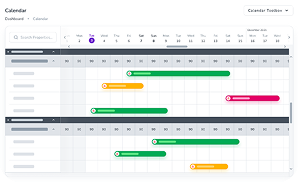
Strategic Vacation Rental SEO Checklist
- 9 min
If you want more bookings through your vacation rental website, Search Engine Optimisation (SEO) is key. By improving your site’s visibility on Google, you can attract more guests without relying heavily on third-party platforms.
To simplify your website’s optimisation, we’ve created a detailed, downloadable Vacation Rental SEO Checklist. This comprehensive resource covers all essential tasks – from keyword research and content updates to mobile optimisation and local search visibility. Use this checklist to boost your rankings, attract more direct traffic, and stay ahead of the competition.
How to Increase SEO on Your Vacation Rental Website
To elevate your holiday rental website’s SEO, rank higher on Google, and attract more organic traffic, implement the following strategies:
1. Use Keyword-Rich Content
Identify and use keywords that potential guests are searching for, such as “seafront cottage in Cornwall” or “pet-friendly holiday rental in the Lake District.” Place these naturally in your titles, headings, and descriptions.
2. Create High-Quality Listings
Each property page should include:
- Unique descriptions
- High-resolution images and videos
- Details about amenities, nearby attractions, and booking options
Avoid copying content between listings to prevent SEO penalties for duplicate content.
3. Optimise Title Tags and Meta Descriptions
Craft compelling and keyword-rich title tags (50–60 characters) and meta descriptions (150–160 characters) for every page. These are what users see in search engine results.
4. Improve Site Speed and Mobile Friendliness
Use responsive design and compress images to ensure fast loading on all devices. A slow or clunky site can lead to higher bounce rates and lower rankings.
5. Build Internal and External Links
Link to related pages on your own site (e.g. from blog posts to listings), and work on gaining backlinks from local tourism boards, travel blogs, or partner businesses.
6. Start a Blog
Publishing regular blog posts about travel tips, local attractions, and seasonal events can bring in traffic and improve keyword coverage.
7. Use Schema Markup
Implement structured data (like VacationRental or Review schema) to enhance your listings with rich results like star ratings and price information in Google search.
8. Optimise for Local SEO
Claim and optimise your Google Business Profile, create location-specific pages, and use local keywords to show up in “near me” and map searches.
9. Avoid Thin or Duplicate Content
Prioritise important pages and make sure every piece of content adds value. Thin or repetitive pages can hurt your site’s credibility with search engines.
10. Track and Adjust Your Strategy
Use tools like Google Analytics and Google Search Console to monitor traffic, user behaviour, and search performance. Adjust your content and SEO tactics based on the data.
The ROI of Direct Bookings: Why Your Website Is Your Best Asset
Did you know that platforms like Airbnb and Booking.com can charge up to 15–20% (or more) in host commissions and guest fees? By driving direct bookings, that entire percentage stays in your pocket.
Beyond the savings, direct bookings offer invaluable data on your guests, enabling for personalised marketing, repeat business incentives, and a stronger brand identity.
Download Your Free Vacation Rental SEO Checklist
Boost your website’s visibility and attract more direct bookings with our free Vacation Rental SEO Checklist! This comprehensive guide helps vacation rental owners and managers stay on top of essential SEO tasks, such as keyword optimisation, site speed, mobile usability, and local search strategies. Download your free SEO checklist today and take the first step towards a higher-ranking, better-performing website!

